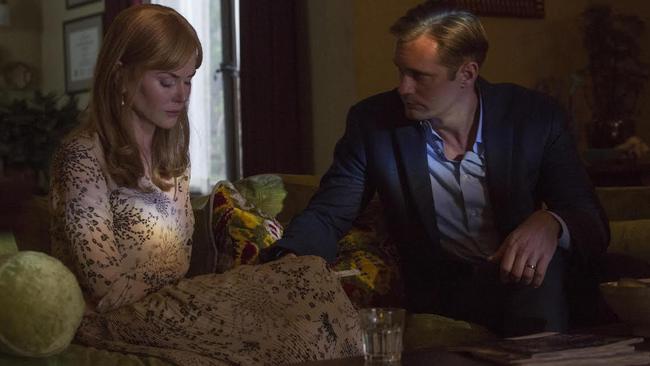Why men’s behaviour change programs are working
THEY’RE not going voluntarily but men’s behaviour change programs are working by finally getting abusive men to “own” their actions.

It’s a wintry Tuesday night in Melbourne and you’d like to be home watching TV. Instead, you’re sitting in a circle with a dozen guys, trying not to get called on during your first session at a men’s behaviour change program.
There’s one other new guy who, like you, has been ‘directed to attend’ by the courts. But unlike you, he has an attitude problem, interrupting and cracking bad jokes. The facilitator is blunt. He can’t guarantee the man’s partner will take him back, he says, but if he keeps attending he might get to see his kids again.
The other guys are there for anything from an anger management problem (or ‘verbal abuse’ as the facilitator insists on calling it) to extreme violence. You don’t belong here, it’s all a big mistake. But as the other men tell their stories to start to recognise bits and pieces. And just for a moment you feel less alone.
MEN’S Behaviour Change programs are working. Research by Monash University and Violence Free families found that 65 per cent of men report that they are ‘violence free’ or almost violence free two years after completing a course.
That a program that is supposed to work actually does work might not seem newsworthy, but when you consider that at least one woman a week is killed by her current or former partner, it’s crucial.
But how do they actually work?
The majority of men who attend are not there voluntarily, says Michael Brandenburg who works for No To Violence incorporating the Men’s Referral Service, so building up their internal motivation is vital. “It’s about letting participants know you’re supporting them to change rather than attacking them.” And since men are often more likely to respond to older members sharing their stories rather than the facilitators themselves, older participants play an important role. “It’s worth 10 times more when it comes from their peers.”
From there? It’s all about the ‘R’ word.
“Very little can happen until you can get people to take responsibility for their actions. When men begin the program they often think they’ve done nothing wrong,” says psychologist Andrew Compton. He has spent over 20 years facilitating Men’s Behaviour Change groups, and doing individual work with abusive men. “They might think they’re there because someone dobbed them in unfairly, or the police made a mistake. But if they take responsibility they might have a chance.”

Their task isn’t made easier when prominent men like Mark Latham minimise violence by calling it a ‘coping mechanism’.
“That’s a great way to shift responsibility from the man to the woman, but it is absolutely a choice,” Brandenburg says. “We tell them ‘you’re not abusing your mates or your boss, but you are abusing your partner. What’s that about?’ Taking responsibility means owning the abuse, no more excuses, no more blaming.”
Both facilitators concur that rigid notions of male-female roles “with women doing childcare and housework and men are the boss” are a common denominator among men who choose to use violence.
“The word ‘patriarchy’ is not used much these days, but that’s what’s behind it — men writing the rule book and having the power in their relationships,” says Brandenburg. “A lot of men never washed clothes, cooked or did the childcare ‘so why would I start doing it now?’ They think those jobs are ‘women’s work’ and when these tasks are incomplete they impose their power. All these behaviours and messages are being absorbed by young children.
But for men’s behaviour change programs to work, community attitudes must also change.
“We have them for two hours in a week,” says Brandenburg. “But after that, he goes back into a society that supports inequality and objectifies women. We need to be able to send them back into a community that’s saying the same thing we are. Educating society about gender inequality is crucial in the cycle of change.”
Men’s behaviour change programs endeavour to use a cognitive behavioural approach.
“We start with identifying the specifics of their abusive behaviour,” says Compton. “Then it’s about learning to recognise what happens when you get angry, when that gut instinct ‘fight or flight’ kicks in and you react as if you’re in danger by attacking back.”
“It’s about learning to pick up what’s going on for them earlier so it doesn’t get to the point where they’re ready to use violence,” says Brandenburg.

Re-building trust within their relationships, however, isn’t guaranteed.
“Ultimately, you can have lots of change in a group,” says Brandenburg, “but it’s only through interacting with others that you see if the change has taken effect.”
Both facilitators said the work was confronting, but deeply rewarding. “A lot of what we do is basic empathy training — learning to see things from the point of view of their partner,” says Compton. “The most rewarding thing is when you see men take responsibility, really engage with the program, and begin a change process. In three to six months they may get a new outlook on life, regardless of what happens in their relationship.”
“Generally speaking men want to be in healthy, happy relationships,” says Brandenburg. “We try to help them understand what that looks like. Sharing power and decision making with their partners actually makes life easier!”
Despite the success of these programs, there is currently not enough funding to meet demand. The average wait list to access a program is six months.
And while the Victorian Andrews government has put a significant amount of money into supporting victims and working with offenders, the Commonwealth Government has not. “They did put out national standards to working with perpetrators of violence, but there’s no more money behind it,” says Brandenburg.
In the meantime, there are still support services available that men can access anytime. “Historically men tend to wait until a crisis hits before contacting support services. But they can contact us at the NTV / MRS even just to ask questions about their behaviour,” says Brandenburg. “But if we can take the burden off waitlists, it leads to more men engaging in services and ultimately more women and children feeling safer in their own homes.”
Contact No To Violence / Men’s Referral Service on 1300 766 491
Alice Williams is a Melbourne writer. Follow her on Twitter and Facebook.



